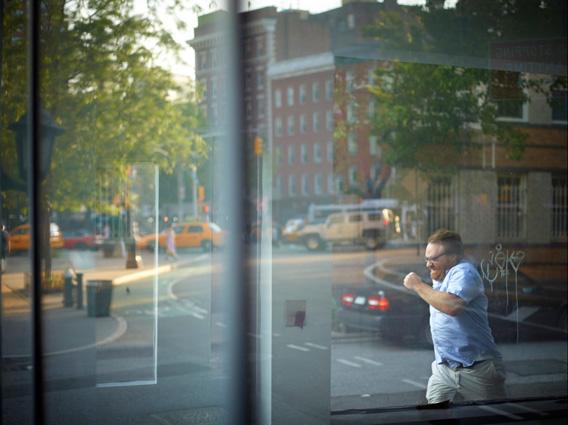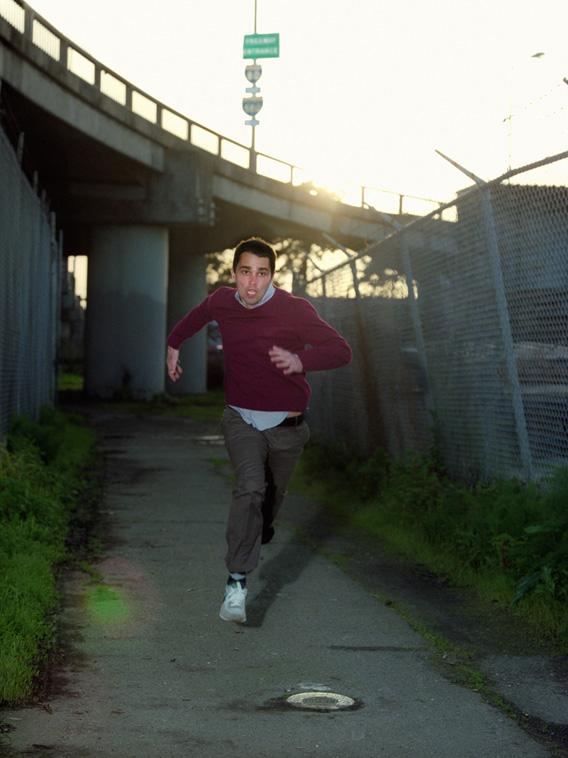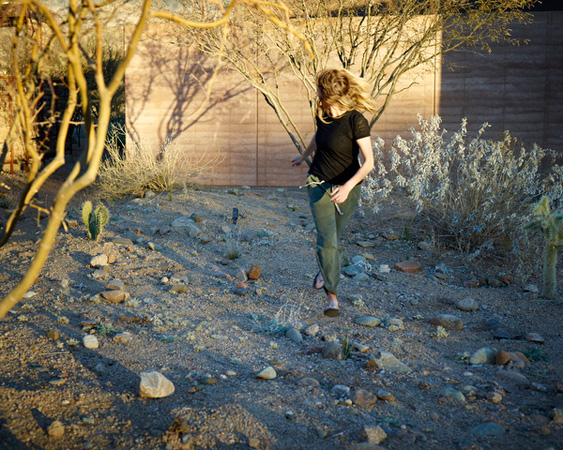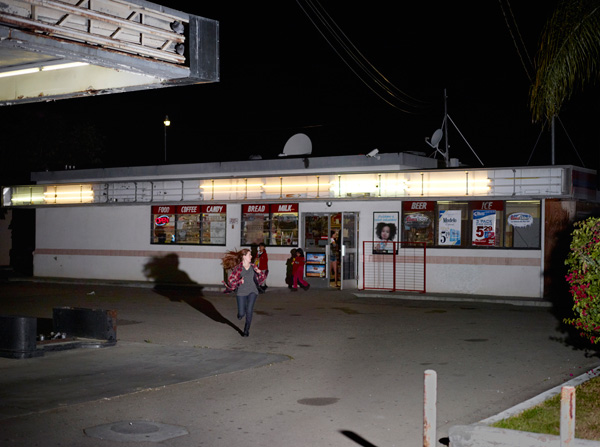Running for the Camera: Tabitha Soren’s Fine Art Workout
Anyone who has participated in a race when there were cameras around knows it’s nearly impossible to control how one looks while running. Official race snapshots, which usually arrive a few days later, generally reveal expressions and bodily contortions never presented in non-running life. Although not generally flattering, this also makes the photos intriguing. In the rush from A to B, most people offer a side of themselves invisible while standing still. (Unless you’re this guy.)
Reporter-turned-fine-arts-photographer Tabitha Soren hit on the potential of such photographs accidentally. “I had this great picture of my daughter running at dawn. But it didn’t fit with any of my other projects.” She decided to keep going with it, asking friends and friends of friends to run for her—on the beach, through a house, into the woods, and beyond.
Sometimes they arrived in overly eye-catching clothing, and she urged them tone it down. (The subject who showed up with three Louis Vuitton suitcases full of costume changes was momentarily disappointed.) She would then direct them through her carefully selected scenes, giving them guidance about where to start and end and perhaps which way to turn their head. The more they ran, the less they seemed to think about the fact they were having their picture taken. By the 50th wind sprint, her subjects had generally let go and acquired a more natural gait. Despite exhaustion, they tended to leave their fine-art workout pleased to have run for art, Soren says.
The results of this sweaty endeavor will be on display at the Indianapolis Museum of Contemporary Art from June 1 to July 21 in an exhibit entitled The Natural World.
Soren’s work appears alongside Min Kim Park’s installation “Finding A Pose.” The works are connected, the curator explains, by a shared sense of anxiety. Soren’s photos inevitably raise the question in the viewer’s mind, “What is this person running from?” Godzilla? An ex-wife? A perfectionist fine-arts photographer? The postures of the runners and the flash lighting make the images feel like scenes from a movie. Some could be from a post-apocalyptic zombie pic, while others imply a simpler narrative about, say, a regular office worker who struggles to get to work on time.

Soren says that the most challenging person to photograph was not a jogging novice, but, ironically, a competitive runner, pictured below. “He got too close to the camera too fast and I wasn’t used to that. He’s like, ‘It’s not going to look like I’m running if I don’t go that fast.’ I kept telling him, ‘You don’t have to run 50 miles per hour ... really.’ He was really making it hard, because I was using film.”
Soren repeatedly acknowledged in our conversation just how challenging it is to make good pictures. You try and try, and fail, and then maybe, eventually, sort of get something, she says. This is a common experience, of course, but for Soren, who soared through the TV ranks in her 20s—from a video editor at CNN to the face of MTV’s “Choose or Lose” coverage of the 1992 presidential campaign—this struggle is still relatively new.

“Putting together a story with pictures was effortless,” she says, referring to her work for CNN. But as naturally as that came to her, she likes her new endeavor better.
“I’m so happy to be just working with one frame at a time. I like working alone in the darkroom. I don’t want to collaborate with an editor and producer and director and all the things that come along with making documentaries. I love the singularity of this.”
People who knew her in her TV days still sometimes struggle to understand why she left that world behind, she says. By 28, she had interviewed Bill Clinton, Newt Gingrich, and Yasser Arafat, among others. She was a natural as an anchor or talk-show host.
“It’s hard for Americans to think about people giving up the opportunity to be on TV. It’s not part of our culture.” But, while that experience informed the pictures she makes now, she’s not likely to go back. “It’s nice to have a second act,” she says.



